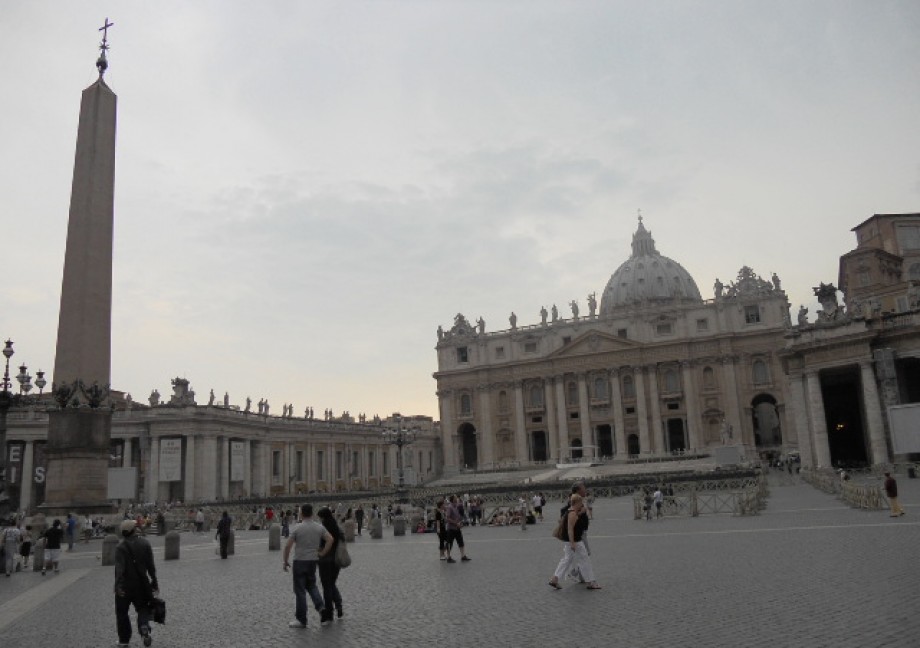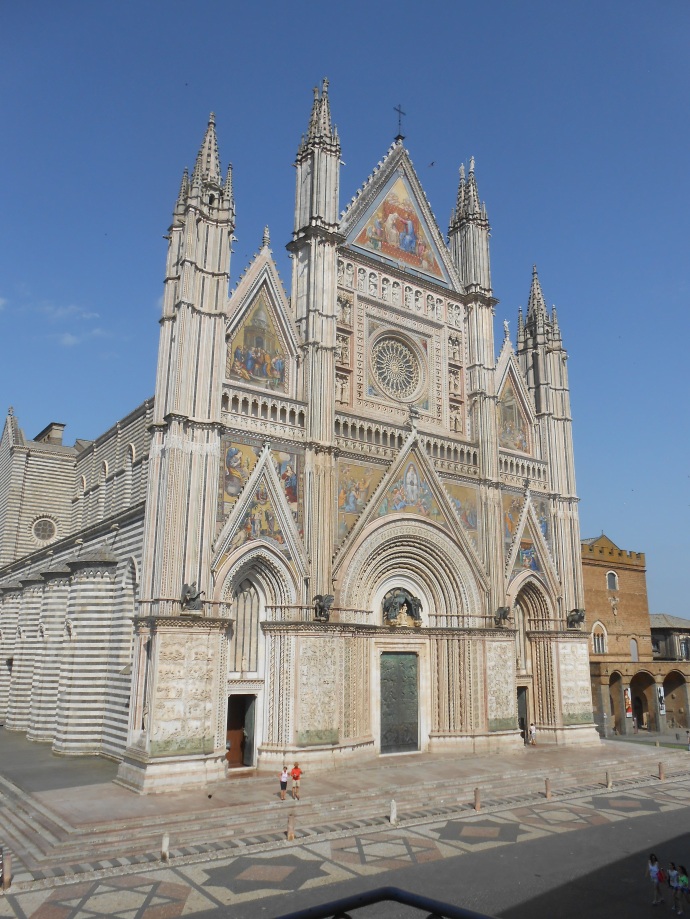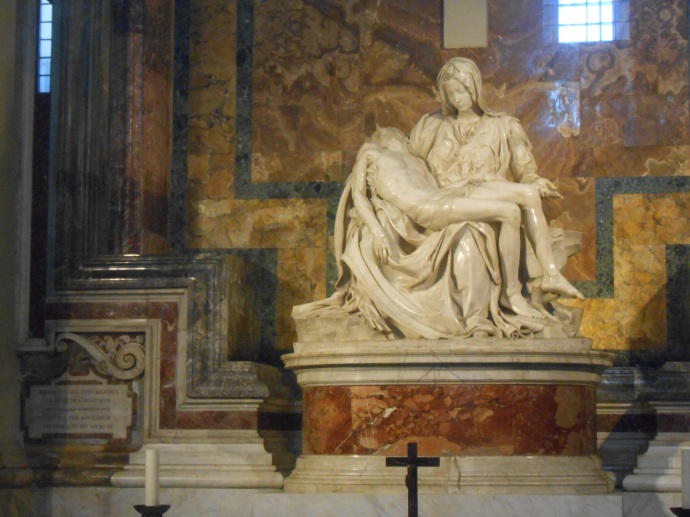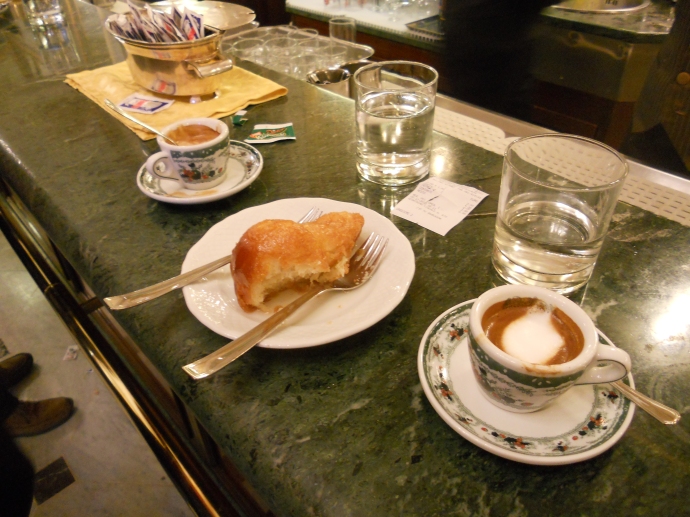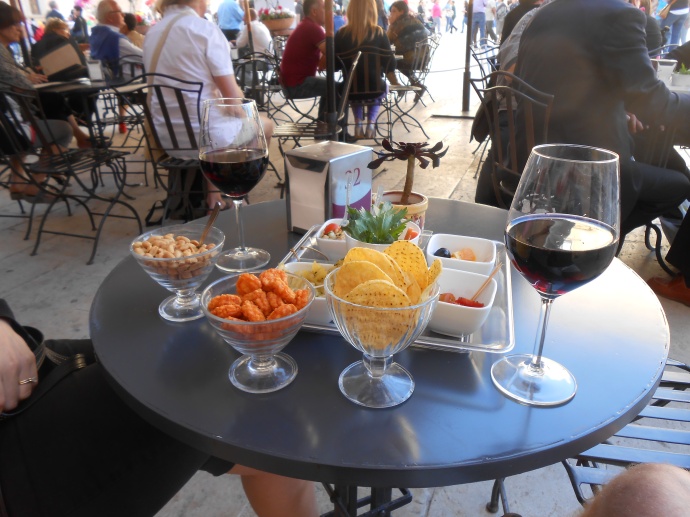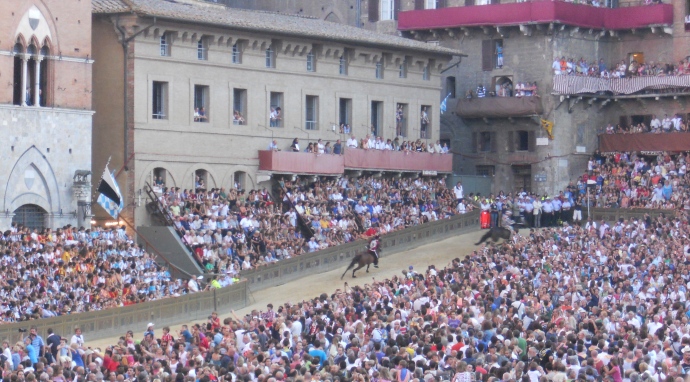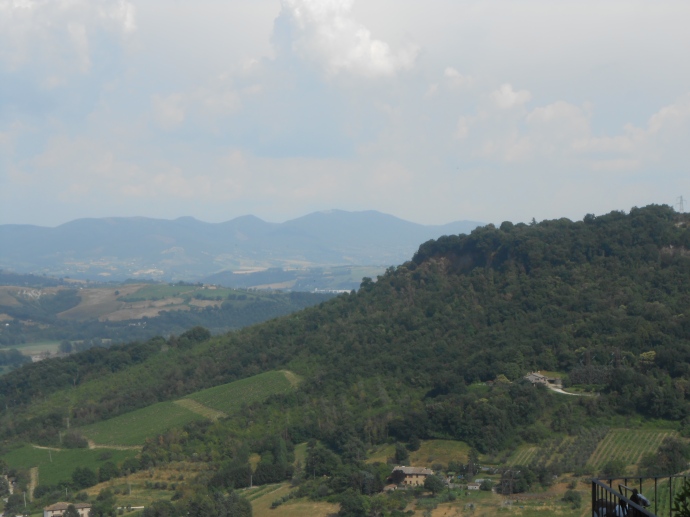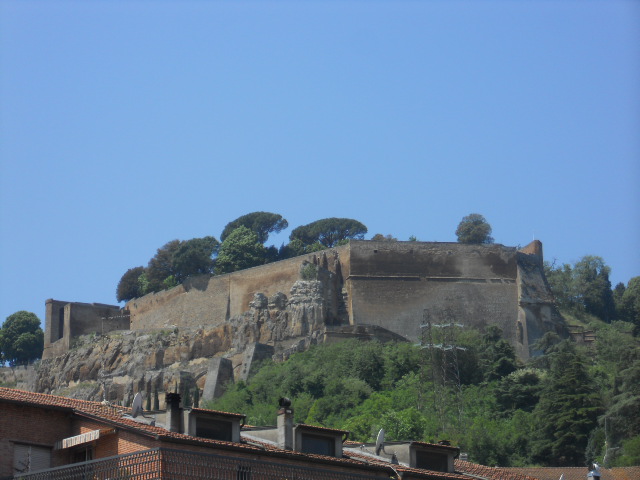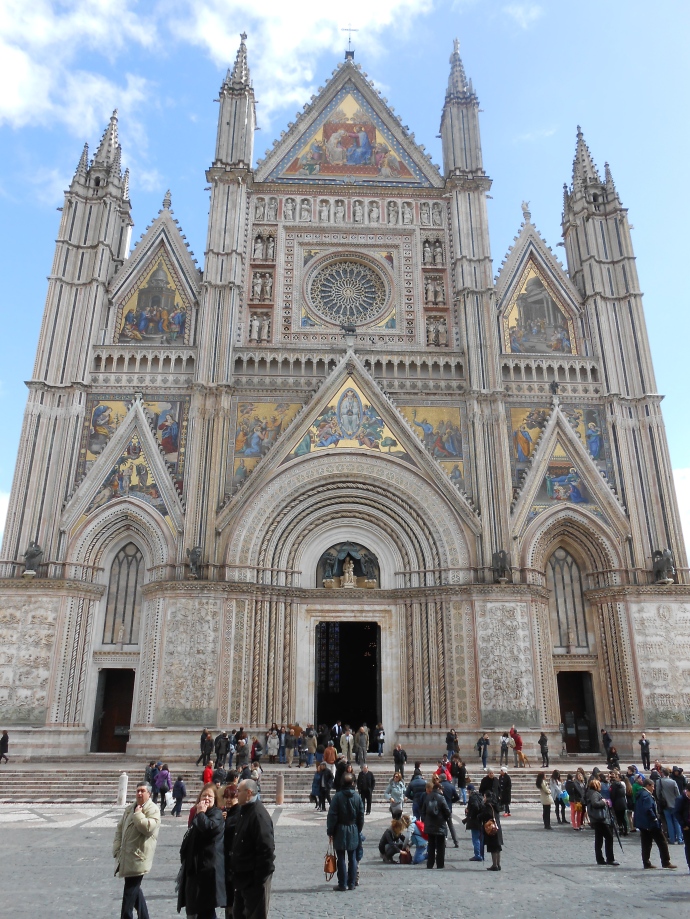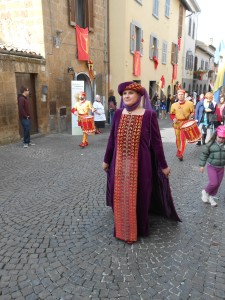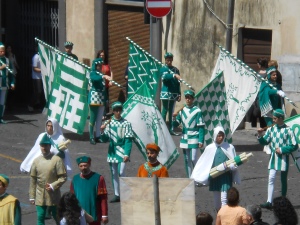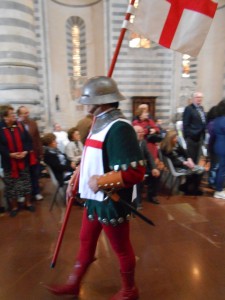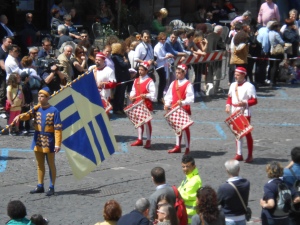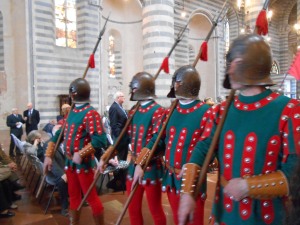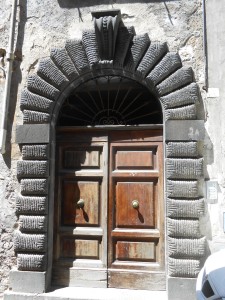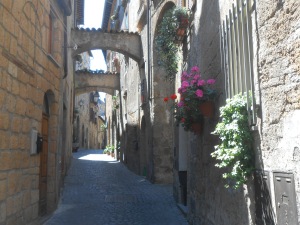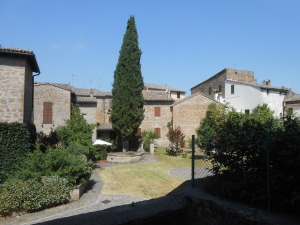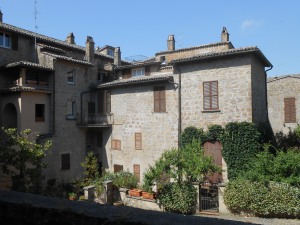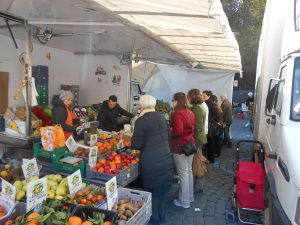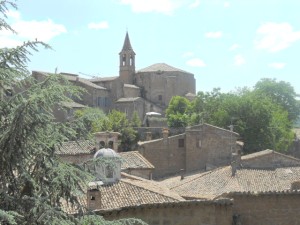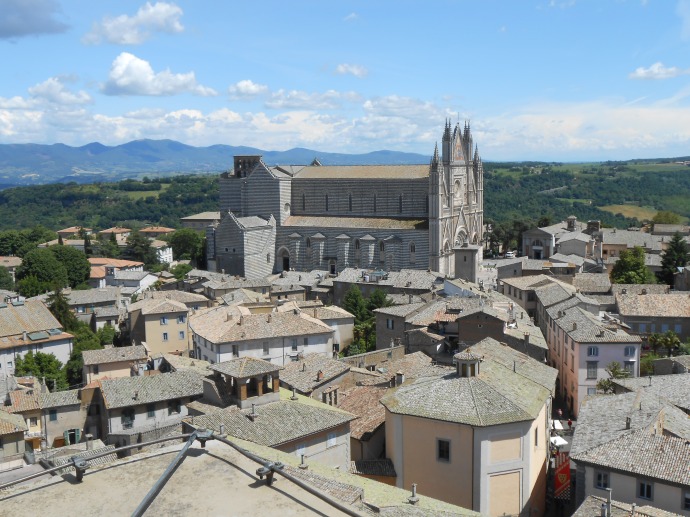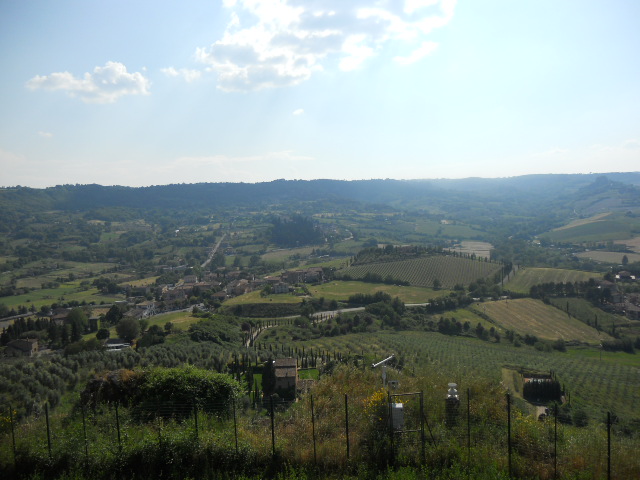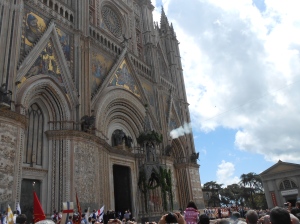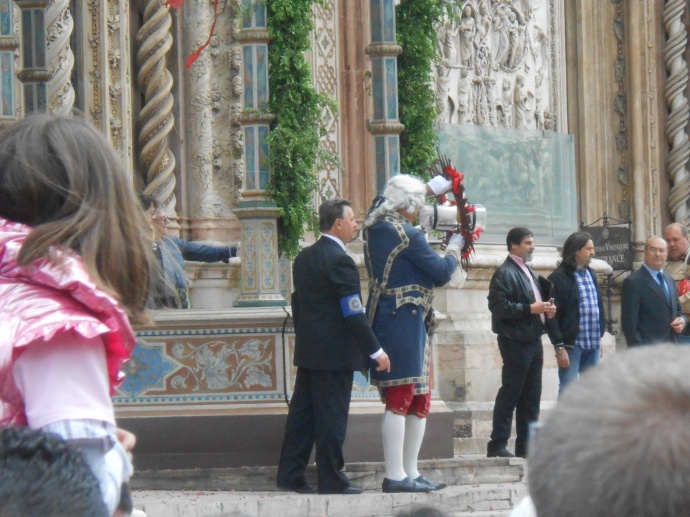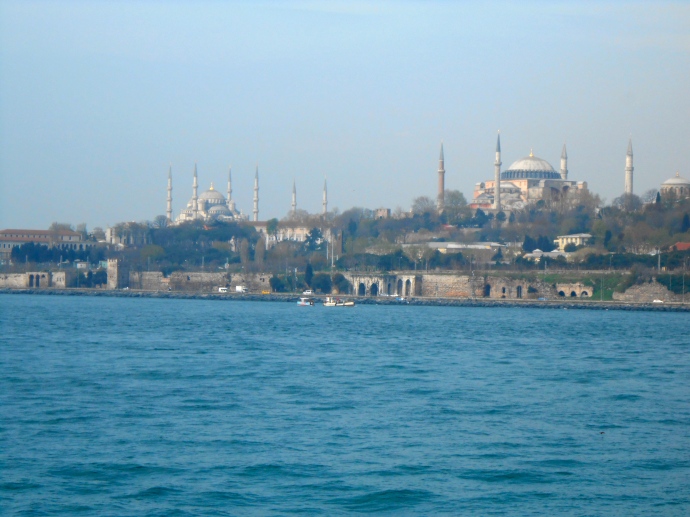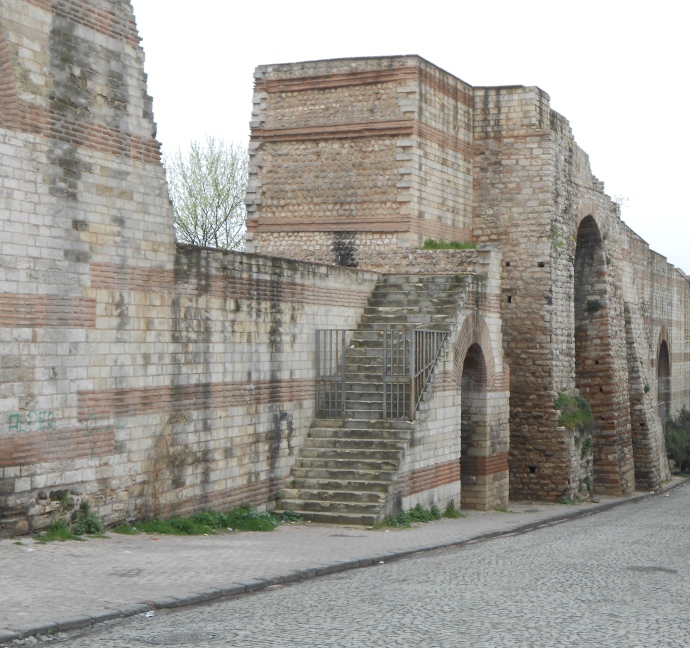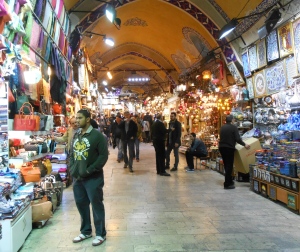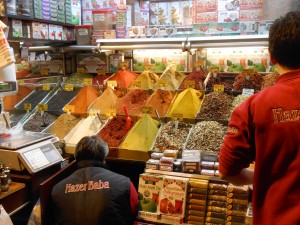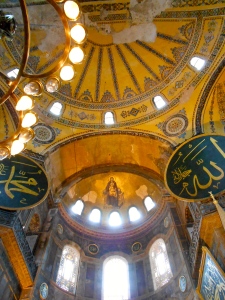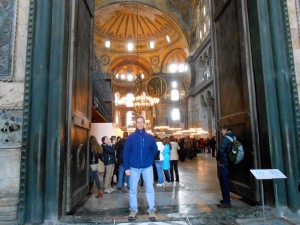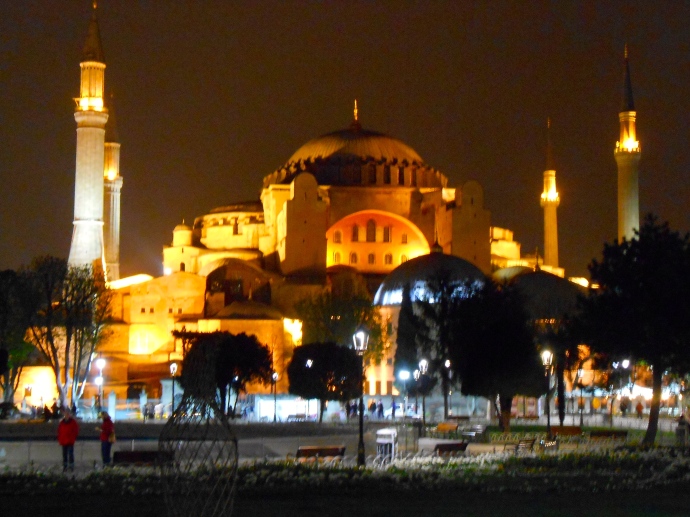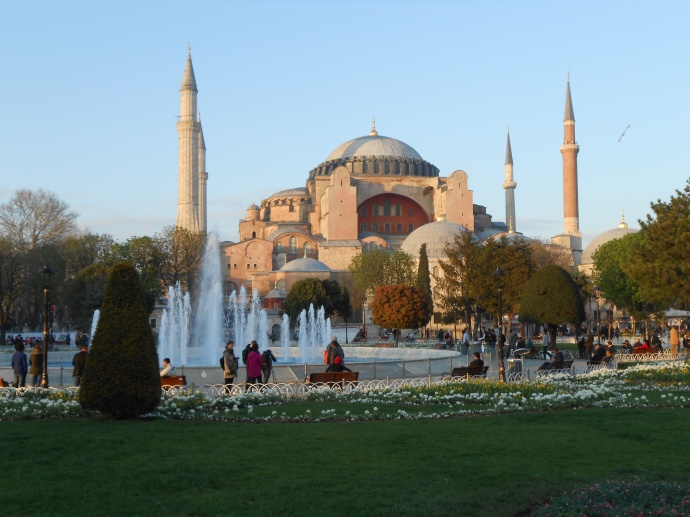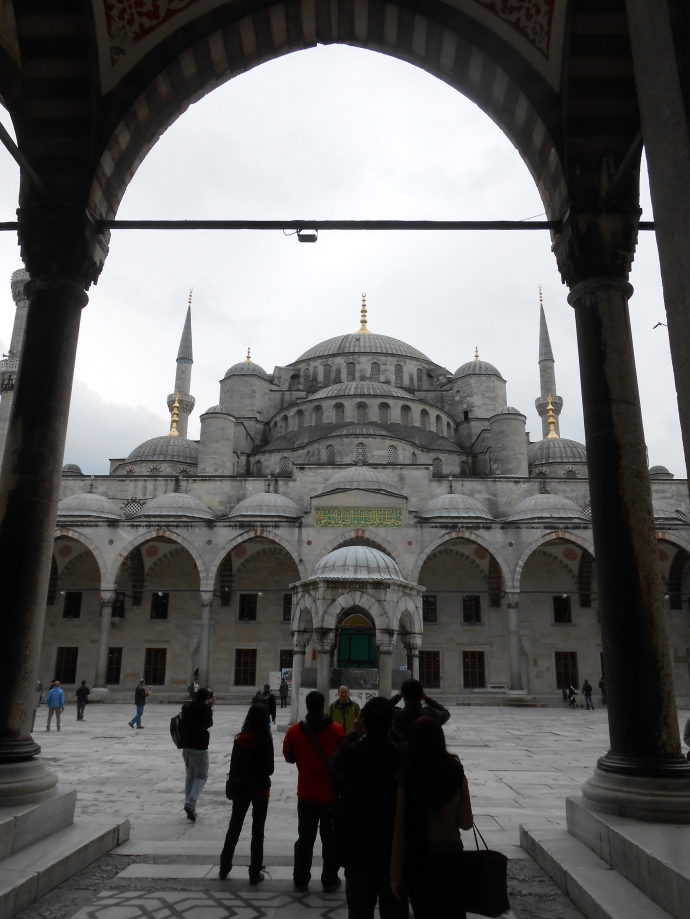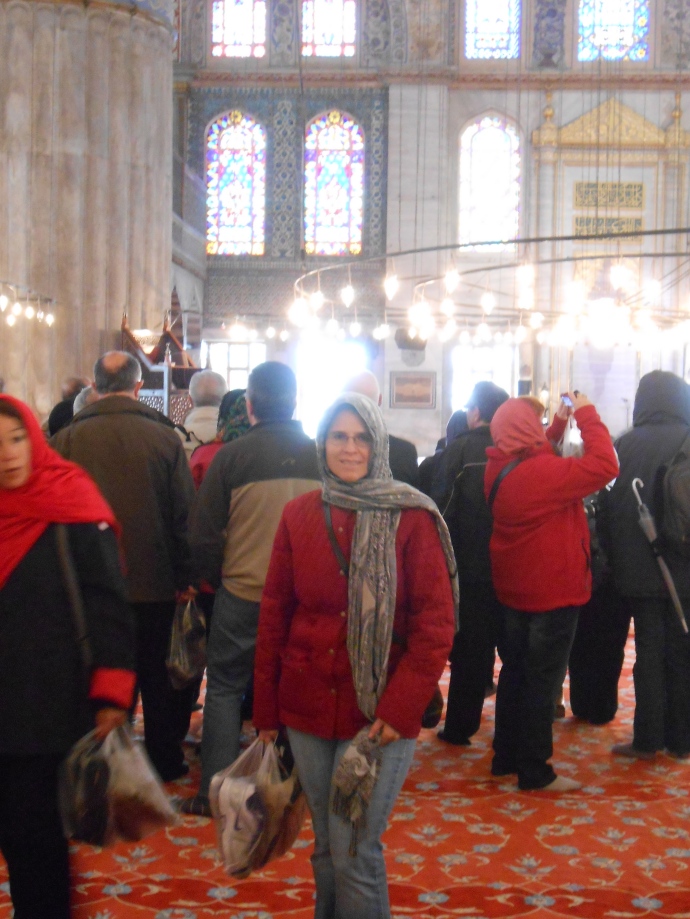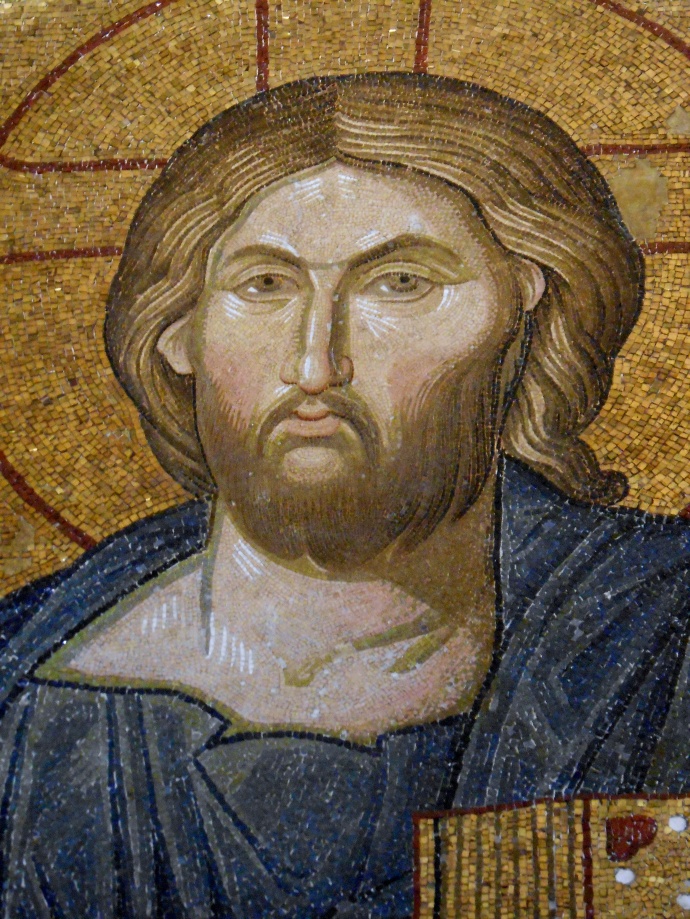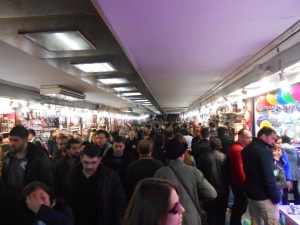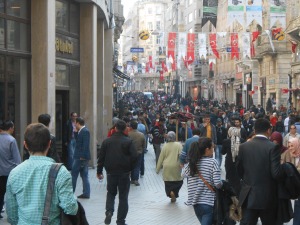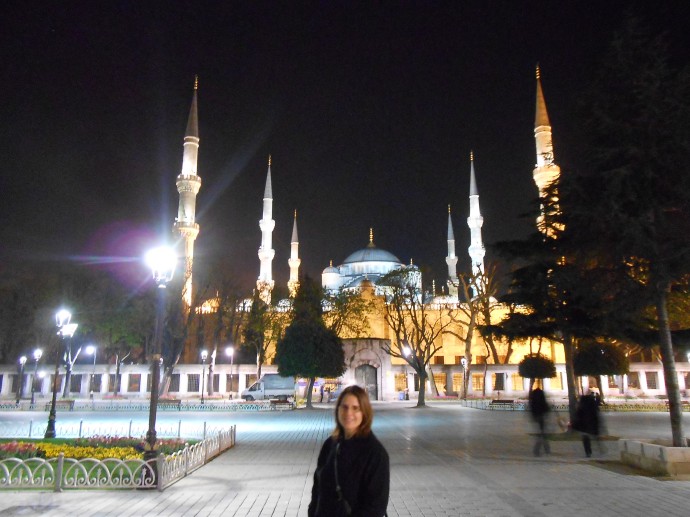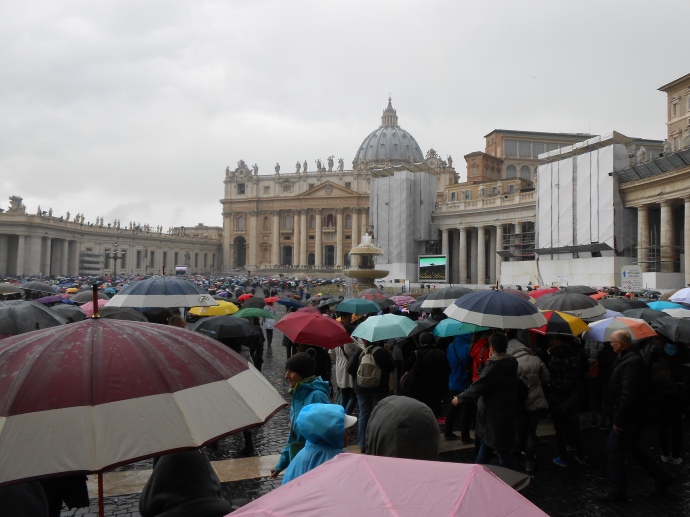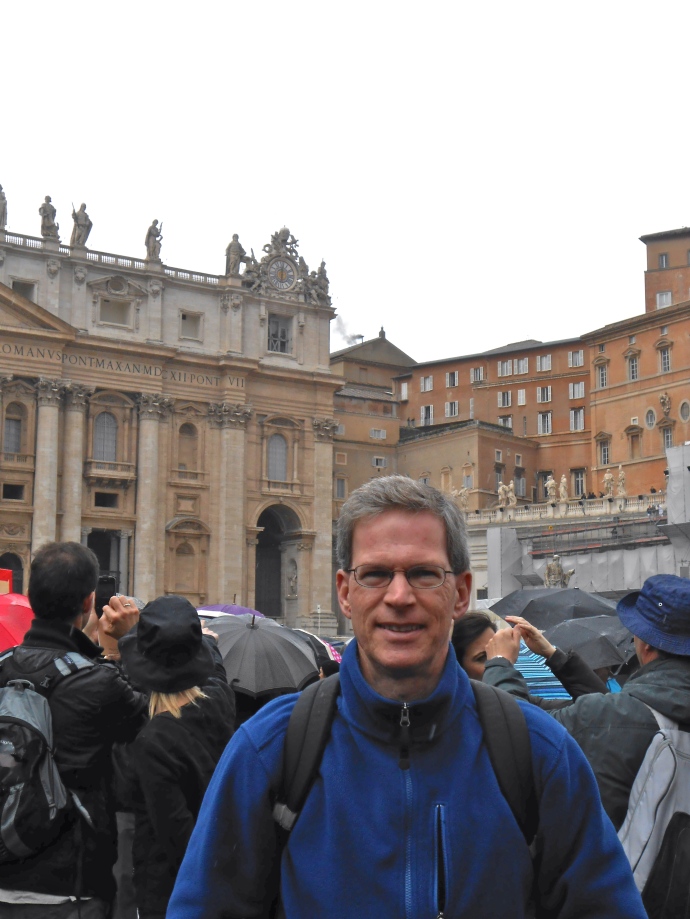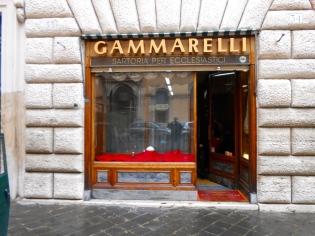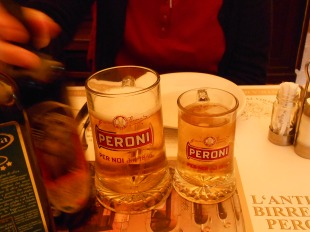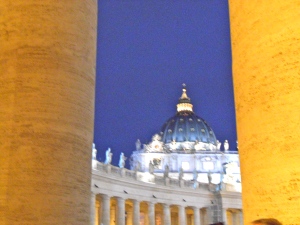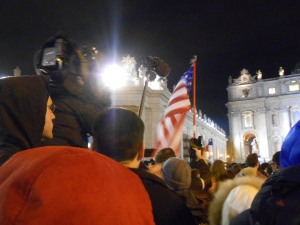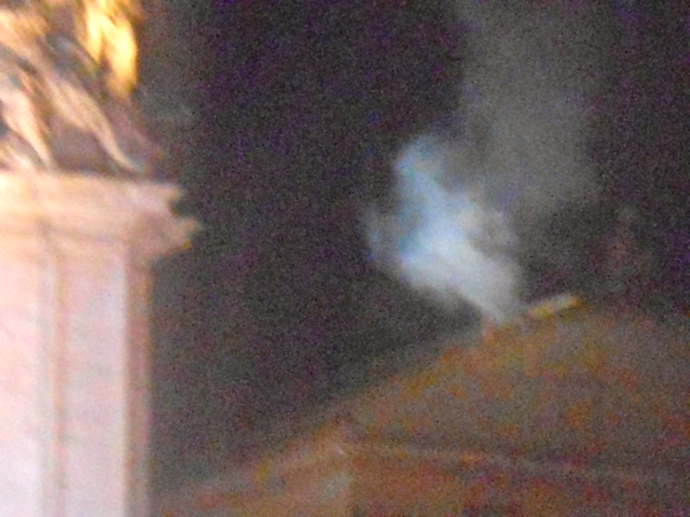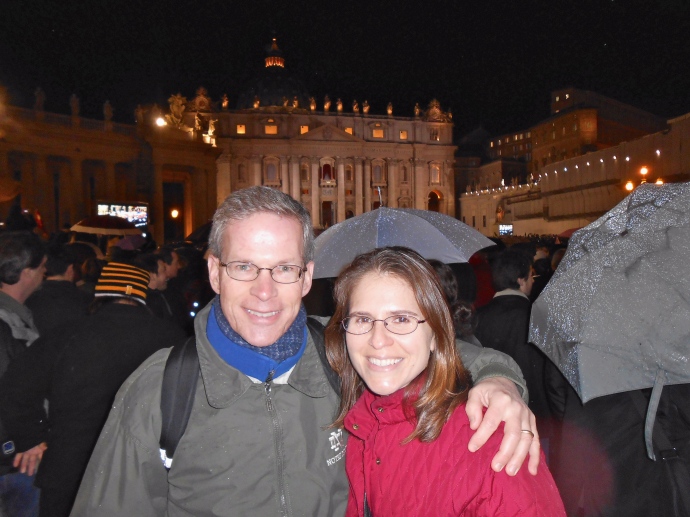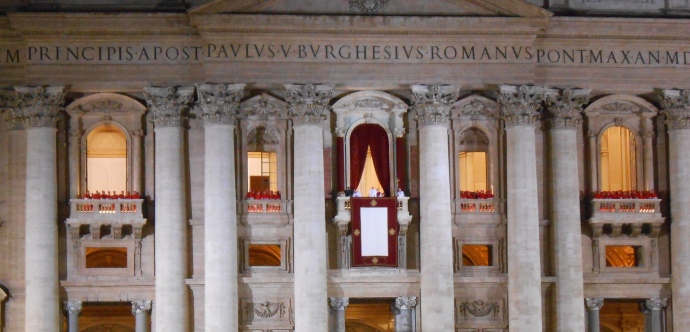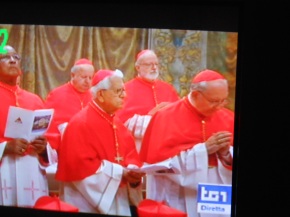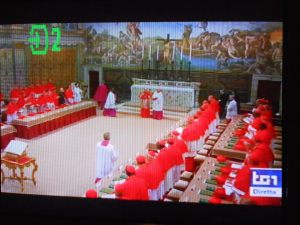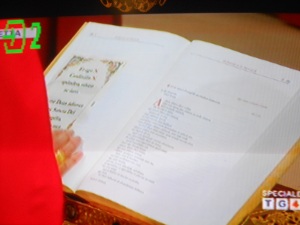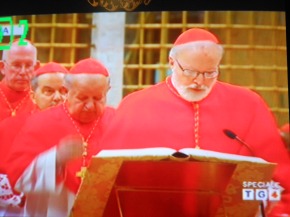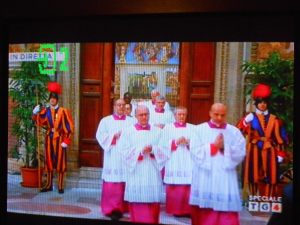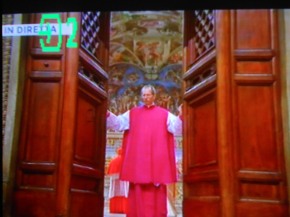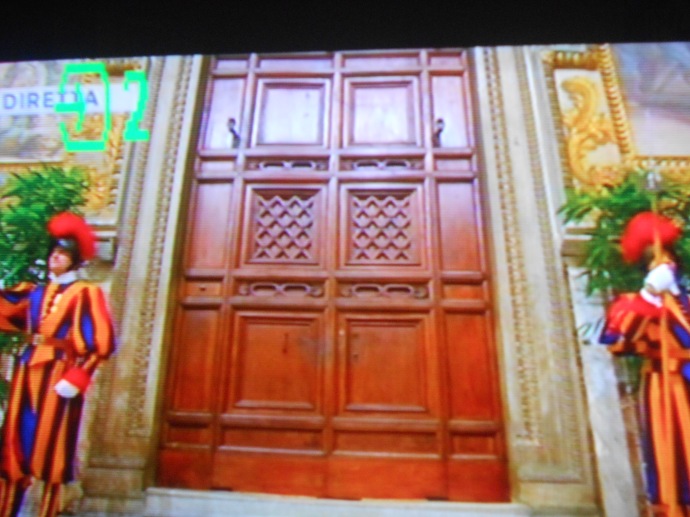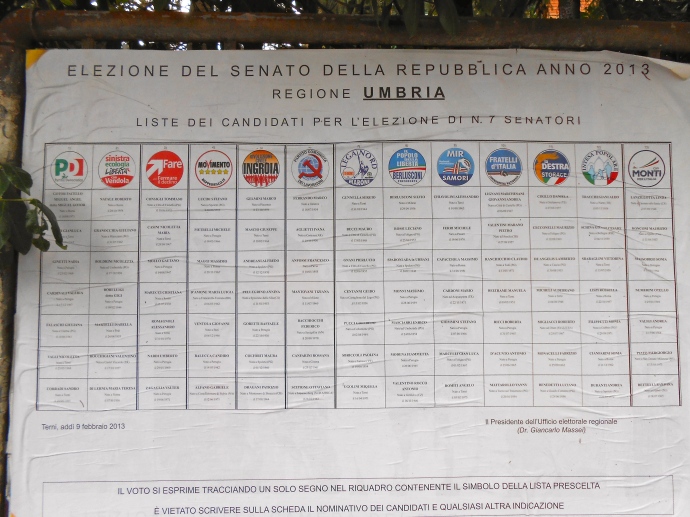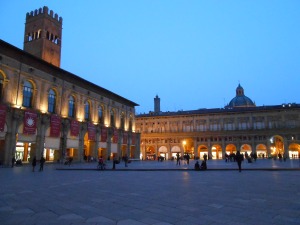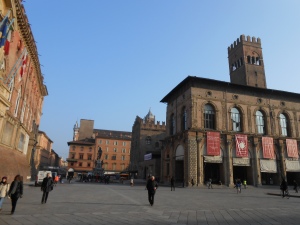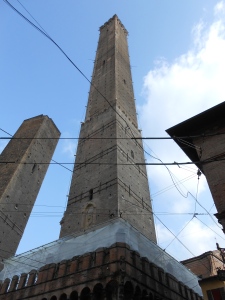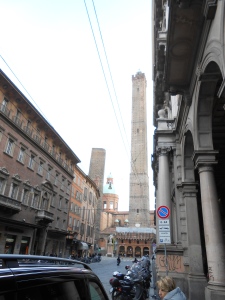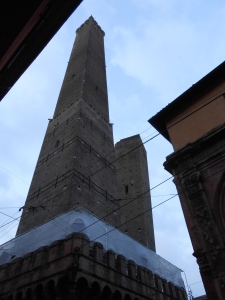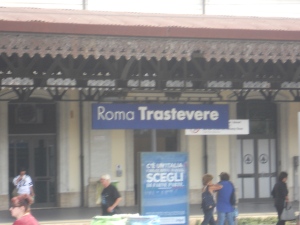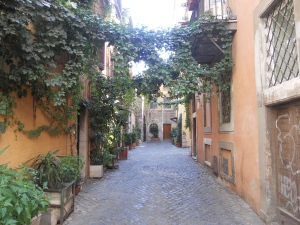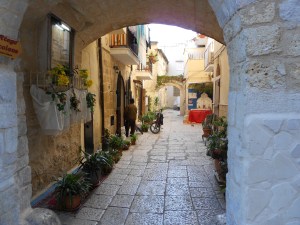As our year in Italy rapidly draws to a close (it’s hard to believe how quickly it has flown by), we spent some time thinking about the many things here that we’ll miss when we return to the United States. The discussion also morphed into some grousing about the things we won’t miss when we get back home. Here they are.
Things we’ll miss . . .
1. The clinking sound that the saucers and little spoons make as the barista lines them up on the bar and readies them for the tazzini (the small espresso cups) holding caffè macchiati. It’s a sound you hear as soon as you enter bars throughout Italy.
2. I vini, the many wonderful and often inexpensive wines throughout Italy. We’ve been fortunate to travel to many of the regions in Italy and to sample the local varietals. From the Sagrantino and Orvieto Classico of Umbria, to the Vino Nobile di Montepulciano and Chianti Classico of Tuscany, the Nero d’Avola of Sicily, the Aglianico of Campania and many, many others, it’s been a real treat. A bonus is that the mark up on wines in restaurants is far less than in the U.S. so you can drink pretty well at a restaurant for a reasonable price.
3. Attending Mass at the many beautiful churches throughout Italy. It’s hard to beat having Santa Maria in Trastevere and the Duomo in Orvieto as your home parishes.
4. The artwork everywhere. We’ve grown accustomed to walking down the street and seeing incredible sculptures, fountains, frescoes, churches, historical buildings and ruins as part of our daily routine. Fortunately, we have not become jaded by it.
5. Il caffè. We really enjoy the coffee in Italy, particularly the caffè macchiato, espresso “stained” with a splash of milk. When we get it in a bar, the clinking of the cups and saucers (see no. 1) just adds to the experience.
6. I pomodori (the tomatoes): All fourteen different types (or however many there are), each with a different, specific and restricted use. God forbid you should use the salad tomatoes to make bruschetta.
7. Seeing the pope so many times this year (four times for Pope Benedict XVI and twice for Pope Francis) that it doesn’t seem like that big a deal any more. Wow, is that the definition of spoiled Catholics or what?
8. The cinghiale (wild boar) and coniglio (rabbit) so common on restaurant menus in Umbria. The cinghiale is amazing, and Kevin is really going to miss that, maybe more than anything else about our year here. We’ll also miss the porchetta panini, sandwiches made with roast pig stuffed with herbs and spices. In general, the food in Umbria is amazing.
9. Seeing how excited Italians in small towns and villages get when we speak Italian to them. Italian is not one of the European languages that a lot of people learn, and the Italians in the smaller towns really appreciate it when you make an effort to speak their language with them. The Romans, not so much (see no. 5 below).
10. Gli spuntini (snacks) that accompany a glass of wine or a beer in a cafe in Italy. Italians traditionally have viewed alcoholic drinks as something consumed with food. As a result, when you order a glass of wine in a caffè, particularly away from tourist hotbeds, you usually get a nice selection of snacks along with the drink.
11. The friends we’ve been fortunate to make in Italy. There are Anna and her friend Tino who were our contacts when we arrived in Rome and helped guide us through some of the bureaucracy, Anna and Enrico, each of whom started out as our partners in “scambia lingua” where we helped them learn English and they helped us with Italian but who became much more than language partners and with whom we spent time visiting some off-the-beaten path sights of Rome, and Julie and Angelo, who were in Rome while Julie worked at the U.S. Embassy and who have pledged to become Biking Meerkats for next year’s ride.
12. I gelati — need we say more?
13. Pizza al taglio — “Cut” pizza to go that is very popular in Rome
14. Olive oil — this list is starting to develop a real food theme, but the olive oil imported into the U.S. just doesn’t compare with getting it fresh here.
15. The ease of traveling by train throughout Italy. The U.S. is really woefully behind on this count.
16. The ability to travel easily to so many other places in Europe and around the Mediterranean. We were able to travel with short flights to Greece, Israel, Austria and Turkey as well as to Sicily. While planning a trip to Greece would seem like a big deal, here, with the ability to cross borders in many European countries without even showing a passport and given the short distance, it was like flying from Boston to Washington.
17. The many types of fresh, homemade pasta (yes, more food) you can buy from small shops all over town.
18. Going out for a walk in Rome with the opportunity to stroll easily past sights like St. Peter’s, the Pantheon, the Colosseum and Piazza Navona.
19. Listening to the church bells near our apartment in Orvieto chime “Ave Maria” every evening at 7:00 p.m.
20. Shopping for dinner at the outdoor markets for vegetables and fruits and hitting the butcher shop and bakery almost daily to get the freshest food.
21. The “meat truck” at the Saturday market in Orvieto.
22. The festivals that take place all over Italy, most of which are either religiously or food based. We were fortunate to experience Il Palio in Siena, the Festa de Noantri in Trastevere in Rome and the feast of Corpus Domini in Orvieto to name just a few.
23. The incredible views of the Umbrian countryside that are just a five-minute walk from our apartment.
24. La passeggiata, the traditional evening stroll throughout Italy. At around 5:30 p.m. or so it seems like all Orvietani pour out of their homes, shops and offices and stroll down the Corso Cavour for “face time” and visiting with friends.
And, alas, things we won’t miss
While our time here has been enjoyable beyond description, a year in a foreign culture brought with it many differences, some of which have left us shaking our heads or a bit disappointed.
1. The smoking. At times it seems like all Italians smoke and smoke all the time. EU regulations now thankfully prohibit smoking inside restaurants. On the downside, that means the smoking diners congregate at the outside tables, often driving us inside in good weather.
2. Making change in stores. Italian store clerks seem to have some sort of deep-seated, almost religiously-based aversion to making change. When we pay in a store with cash the clerks perform some sort of arithmetic gymnastics and ask if we have some unfathomable quantum of change so they can minimize the amount of change they need to count out. A “no” answer is met with an audible huff, often accompanied by some mumbled words apparently indicating exasperation. On the other hand, one of the enjoyable experiences is watching a clerk’s eyes light up and seeing her smile when we give her exact change.
3. The dog waste we had to dodge each day on the sidewalks outside our apartment in the Trastevere section of Rome. Romans in general, and the inhabitants of Trastevere in particular, are not big on curbing their dogs.
4. The complete disregard for others that it seems many Italians and so many Romans show. It was commonplace to have people in line at the grocery store work to cut in front of us, and even the line to receive Communion at Mass often resembled a rugby scrum. We’re not sure if it’s overt rudeness or whether it is just the culture. While in Rome the other day and in a line, an Italian cut in front of about four people, and Deirdre shook her head. An Italian woman told her that it was “just an Italian characteristic that they don’t respect the line.” I jokingly told Deirdre one day that my goal before we leave Italy is to convert Italians to Christianity. I’m running out of time and don’t have much to show for my efforts.
5. Speaking Italian to shop keepers, wait staff, etc. in Rome and getting a response in English. A surprising number of Romans (and Italians all over the country) speak English, and many Romans insisted on conversing only in English no matter how hard we tried to speak Italian with them. And in many cases their English was only a bit better than our Italian. Along with this we can add the lack of customer service in restaurants and stores in Rome. When you enter a store in Rome, a clerk, after speaking to you in English, will tail you throughout the store, watching you as though you are a known shop lifter. In restaurants the service from the wait staff is barely passable at best. It’s obvious Roman waiters are paid a salary and don’t work for tips. In Orvieto though it is a different story, and it is a pleasure to go out to dinner.
6. The lack of screens on the windows. This one we just don’t get. It’s not like they don’t have bugs here. Of those they have plenty. Yet windows in Italy, no matter how new and how nice, do not come with screens. That means that when you open the windows to let the air in, you have to invite flies and mosquitoes in as well. Somehow the Italians either are immune to the bugs, or they just don’t care.
7. Doing laundry. Washing our clothes in Italy occupied too much of our time and required an inordinate amount of planning. Washing machines take almost 2.5 hours to do a single load, and Italians don’t have dryers because of the high cost of electricity. As a result, once the 2.5 hour cycle is done, we have to hang the clothes to air dry. We often would have to adjust our schedule to make sure we were home when the laundry was done to start the drying process. We joke that we have spent way too much time and mental energy thinking about laundry.
8. The rain. It rains a lot in Italy in the winter. That sunny Mediterranean climate we all fantasize about lasts only from May (usually) through late October/early November. The rest of the time it rains. While it’s hard coming from New England to complain too much about a usual high of 52 and rain in January, the frequent rain and constant dampness leave the winter more uncomfortable than anticipated. We quickly learned not to leave the house in the winter without our umbrellas, no matter how sunny the skies. And Romans seem to have some magical ability to make an umbrella appear on demand.
9. Our neighbors in Rome. While we lived in a great location, at times our neighbors made it seem like we were living on the set of the old The Honeymooners show. Thankfully we couldn’t interpret much of the language we heard.
10. The strikes and demonstrations. Italians will strike at the drop of a hat and love a good demonstration that shuts down streets, traffic, public transportation and the like. The rail system and city public transportation are notorious for staging one-day strikes (occurring almost without fail on Fridays) announced about a week in advance. These strikes happen every few weeks, and it’s hard to understand the purpose (unless it’s just for a three-day weekend) since they all go back to work the next day.
11. Public and restaurant bathrooms. We constantly joked about the sorry state of restrooms often found in even nice restaurants in Rome. The restrooms usually suffered from four shortcomings besides being of questionable cleanliness: (1) no toilet paper; (2) no hot water (cold water is a little uncomfortable on a January evening); (3) no soap; and (4) no paper towels. When one of us returned from a restroom, we would jokingly report on how it graded out on these items.
